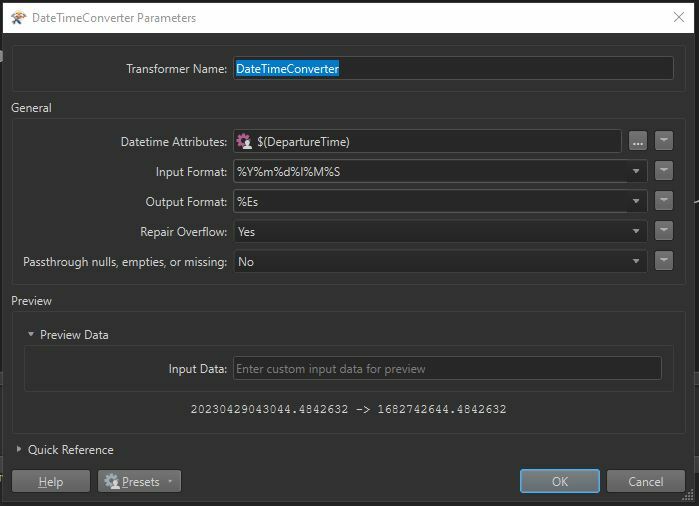I used Excel to convert from date and time to seconds using the formula datetime * 86400. For example, 24/04/2023 8:00 AM is converted to 3891484800. What would be the correct format to perform this calculation in my workspace? Thanks for the assistance.
Question




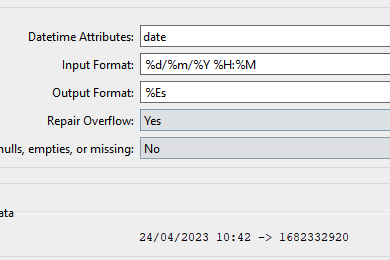
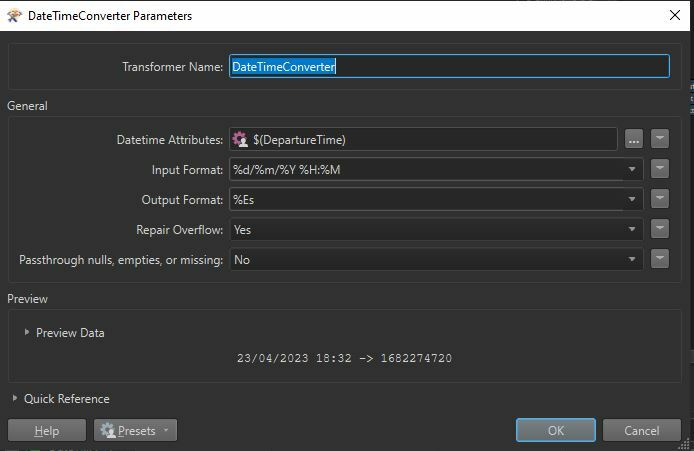
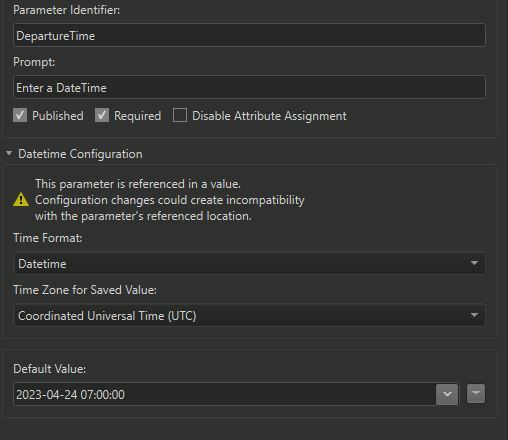 The DateTime converter is giving a rejected output.
The DateTime converter is giving a rejected output. 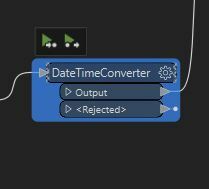 The error message is "DateTimeConverter_<Rejected> (TeeFactory): DateTimeConverter_<Rejected>: Termination Message: 'DateTimeConverter output a <Rejected> feature. To continue translation when features are rejected, change 'Workspace Parameters' > Translation > 'Rejected Feature Handling' to 'Continue Translation''"
The error message is "DateTimeConverter_<Rejected> (TeeFactory): DateTimeConverter_<Rejected>: Termination Message: 'DateTimeConverter output a <Rejected> feature. To continue translation when features are rejected, change 'Workspace Parameters' > Translation > 'Rejected Feature Handling' to 'Continue Translation''" The first four rows are only timestamps, in the format of %H%M%S
The first four rows are only timestamps, in the format of %H%M%S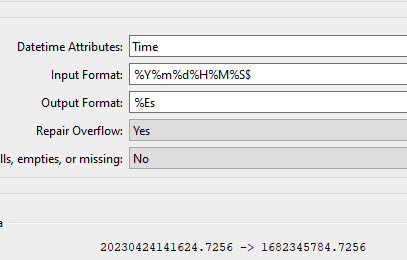
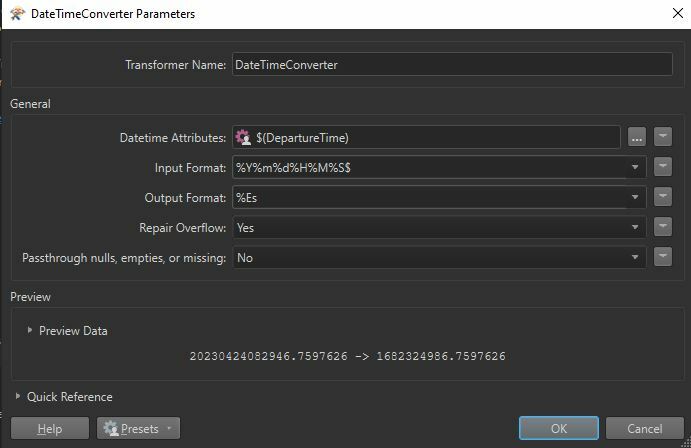 Also, do you know why there is a rejected output from the DateTimeConverter and a column name fme_rejection_code with the record 'INVALID_INPUT'?
Also, do you know why there is a rejected output from the DateTimeConverter and a column name fme_rejection_code with the record 'INVALID_INPUT'?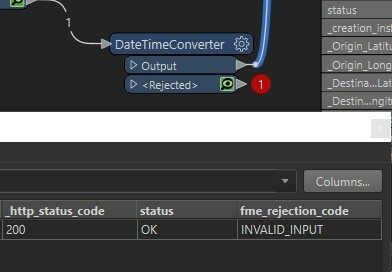
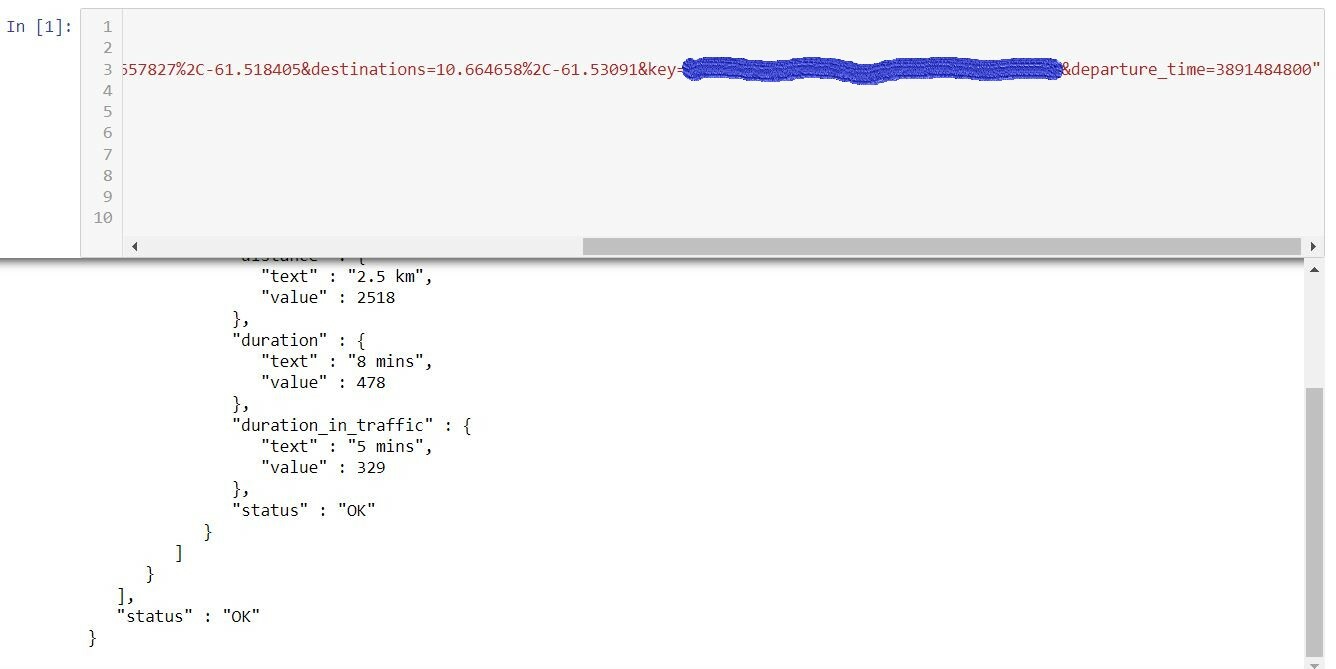


 Below is the DateTimeConverter Transformer.
Below is the DateTimeConverter Transformer.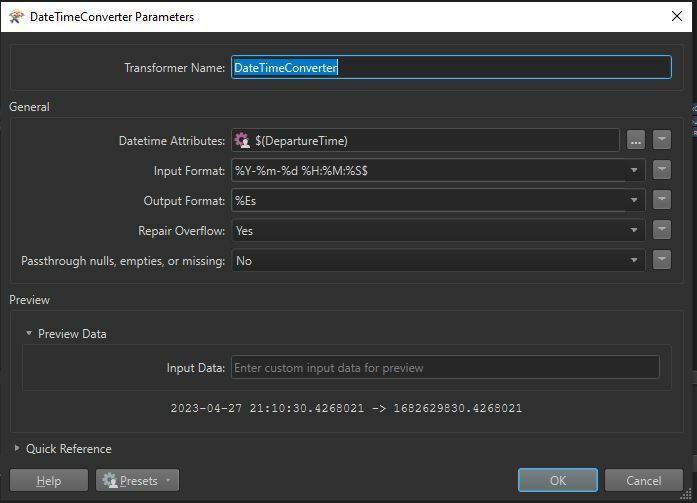 Do you know why I'm receiving a rejected feature? The error message is DateTimeConverter_<Rejected> (TeeFactory): DateTimeConverter_<Rejected>: Termination Message: 'DateTimeConverter output a <Rejected> feature. To continue translation when features are rejected, change 'Workspace Parameters' > Translation > 'Rejected Feature Handling' to 'Continue Translation''.
Do you know why I'm receiving a rejected feature? The error message is DateTimeConverter_<Rejected> (TeeFactory): DateTimeConverter_<Rejected>: Termination Message: 'DateTimeConverter output a <Rejected> feature. To continue translation when features are rejected, change 'Workspace Parameters' > Translation > 'Rejected Feature Handling' to 'Continue Translation''.